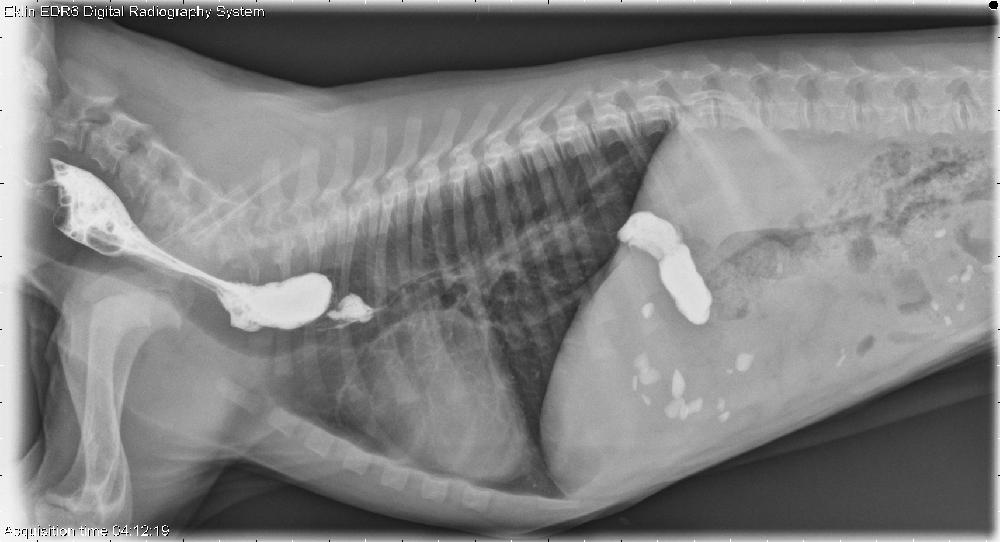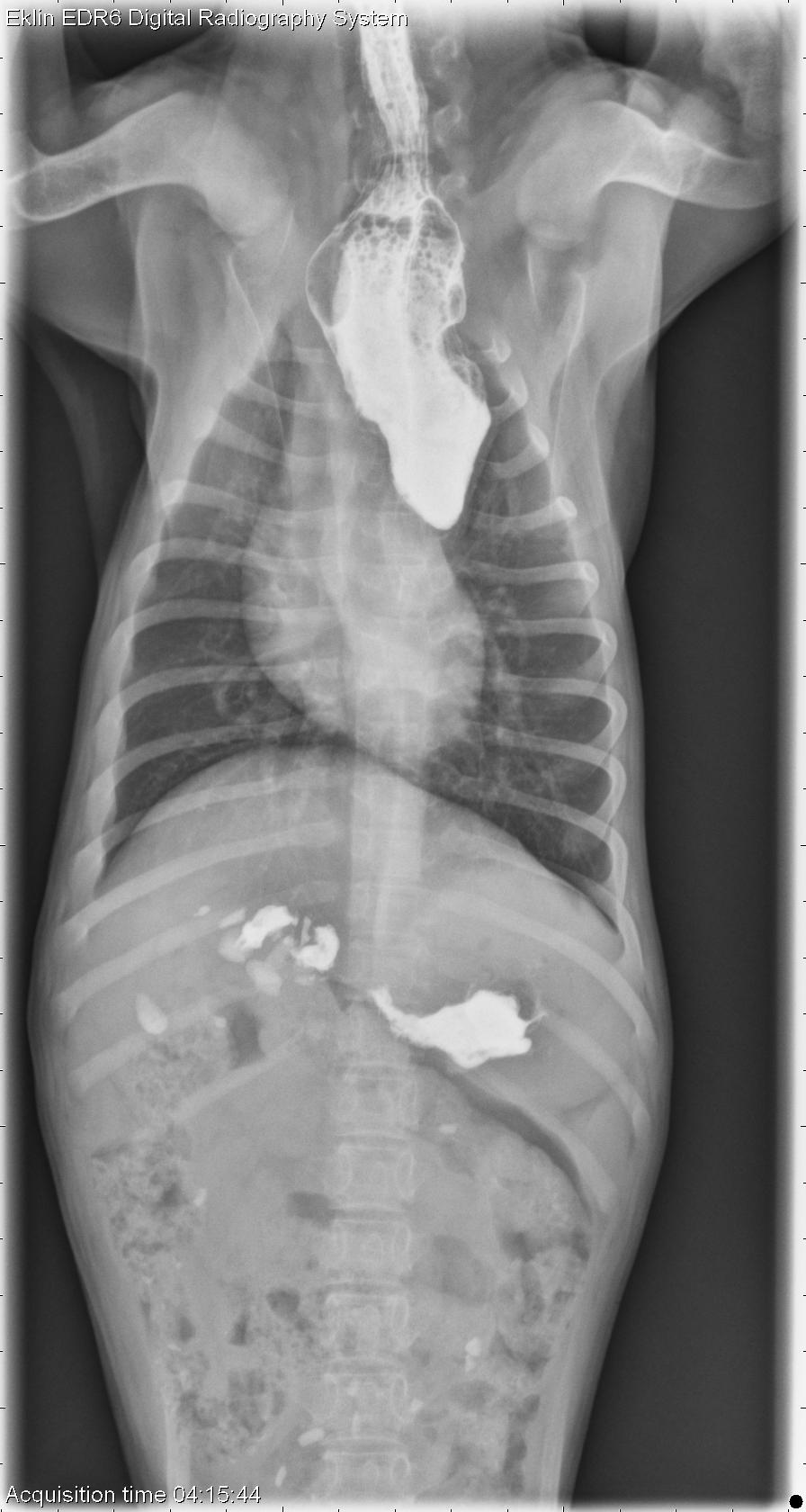Vascular Ring Anomaly
This work is licensed under the Creative Commons Attribution-Noncommercial-No Derivative Works 3.0 United States License. To view a copy of this license, visit http://creativecommons.org/licenses/by-nc-nd/3.0/us/ or send a letter to Creative Commons, 171 Second Street, Suite 300, San Francisco, California, 94105, USA.
Publication Date: 2007-10-17
History
6 week old Labrador Retriever with regurgitation.
Findings
On the lateral radiograph, the trachea is ventrally deviated cranial to the heart. There is gas in the cervical and proximal thoracic esophagus. On the v/d projection, the cranial mediastinum is widened, with increased soft tissue opacity and a gas-filled esophagus. The trachea is deviated sharply to the left at the level of the third rib. The remainder of the cardiopulmonary structures appear normal.
There is poor peritoneal detail consistent with the young age of the animal. The gastrointestinal tract contains some mineral opacity foreign material.
Additional Images


Additional Findings
On the esophagram, the proximal esophagus is dilated. A bolus is static at the third intercostal space, with a small amount of barium passing distal to this site and into the stomach. The distal esophagus is normal.
Diagnosis
- Vascular ring anomaly (most common persistent left aortic arch) causing constriction of the esophagus and deviation of the trachea.
Discussion
The proximal esophageal dilation and deviation of the trachea are characteristic of a vascular ring anomaly, commonly a persistent right aortic arch. The abnormal vasculature forms a ring that entraps the trachea and esophagus between the heart and the aorta. The focal nature of the constriction causes the sharp left deviation of the trachea near the third intercostal space.